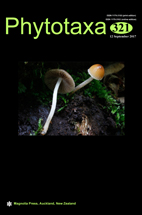Abstract
Recent field studies of the hitherto poorly known Madagascar-endemic genus Billburttia, including the rediscovery of the rare B. vaginoides, have resulted in a more complete understanding of the morphology, anatomy, ethnobotany and conservation status of the two aromatic shrubby species from Central Madagascar. Billburttia capensoides is relatively common and occurs in rocky places from Andringitra to Arivonimamo, while B. vaginoides is a rare species known only from around the Akaratra massif. The two species can easily be distinguished from one another by their habit (erect or spreading branches) and leaflet shape (obovate to linear-elliptic or filiform-linear). The leaves have numerous secretory canals; organic crystals occur in the epidermis, ground tissue and vascular bundles. Studies of fresh fruits confirmed the lack of wings, the position of the vascular bundles in the tips of the ribs and especially the reported presence of unusual acicular crystals in sheaf-like and spherical aggregates (not only in the epidermis, but also in groups close to the epidermis and around the vascular bundles). X-ray microanalysis showed that the crystals do not contain calcium, only carbon and oxygen, indicating that they are organic and precipitate during drying or fixation in alcohol. Updated descriptions of the morphology and anatomy are presented, together with a key to the species and notes on their traditional uses, conservation status and known geographical distributions.

